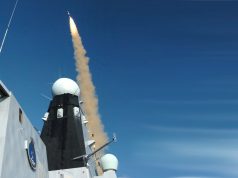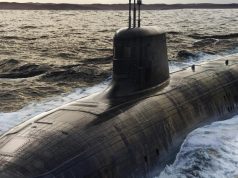Australia’s first nuclear-powered submarine will based on a UK Royal Navy design, the leaders of Australia, United States and the United Kingdom have confirmed in a joint statement.
SSN-AUKUS will incorporate Australian, UK and US technologies, with the UK delivering its own first SSN-AUKUS in the late 2030s. The first subs built in Australia will be delivered in the early 2040s.
To ensure that there is no capability gap with the retirement of the Collins-class submarines, increased visits of US submarines will begin in 2023 and UK submarines from 2026. Beginning in 2027, UK and US submarines will be rotating in Australia.
Sale of Virginia-class submarines to Australia
Beginning in the early 2030s, pending approval from the US Congress, the United States intends to sell Australia three Virginia class submarines, with the potential to sell up to two more if needed.
This action is critical to continue growing Australia’s ability to own and operate a fleet of SSNs, and to provide Australia with a sovereign capability at the earliest possible date. It also ensures Australia sustains its undersea capabilities until SSN-AUKUS is ready, given the planned retirement of Australia’s current fleet of submarines.
This plan is designed to support Australia’s development of the infrastructure, technical capabilities, industry and human capital necessary to produce, maintain, operate, and steward a sovereign fleet of conventionally-armed, nuclear-powered submarines.
“The trilateral plan elevates all three nations’ industrial capacity to produce and sustain interoperable nuclear-powered submarines for decades to come, expands individual and collective undersea presence in the Indo-Pacific, and contributes to global security and stability,” a White House statement said.
“Implementing AUKUS will also require robust, novel information sharing and technology cooperation. Our nations are committed to further trilateral collaboration that will strengthen our joint capabilities, enhance our information and technology sharing, and integrate our industrial bases and supply chains while strengthening the security regimes of each nation.”
“We expect the phased approach will result in A$6 billion invested in Australia’s industrial capability and workforce over the next four years, creating around 20,000 direct jobs over the next 30 years,” the Australian defense ministry said in a statement.
Over the next four years, A$2 billion is expected to be invested into South Australia, and a further A$1 billion in Western Australia.
This commitment from the Australian government will require funding for the phased approach to amount to around 0.15 per cent of GDP per year, averaged over the life of the program.



























